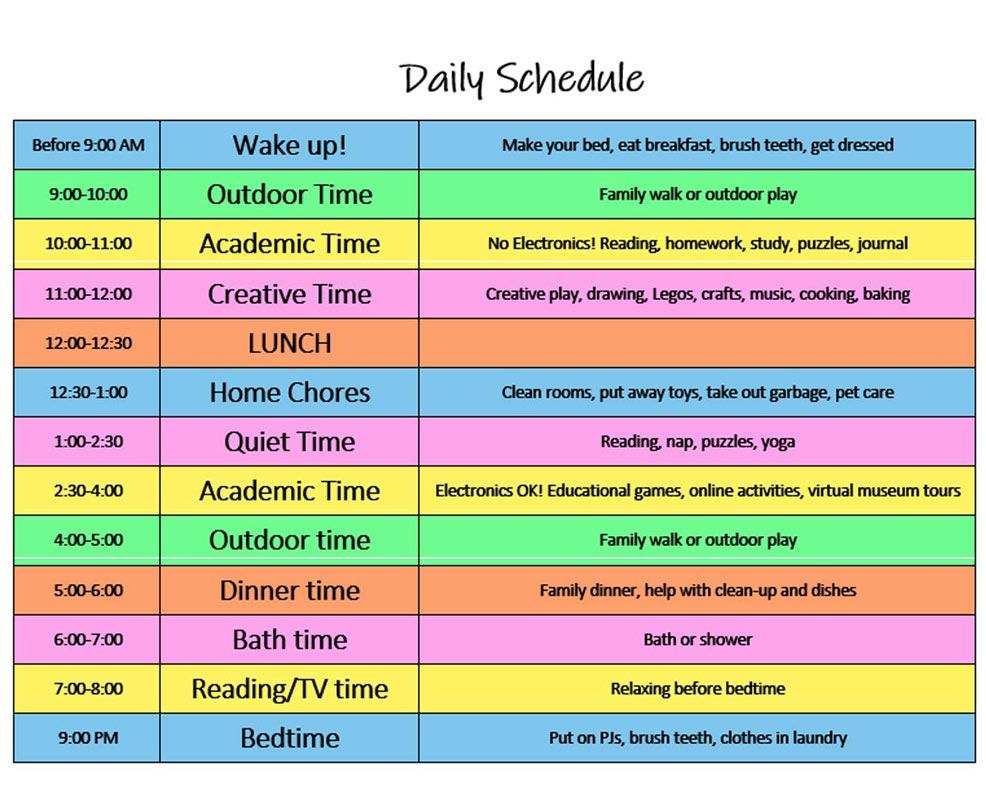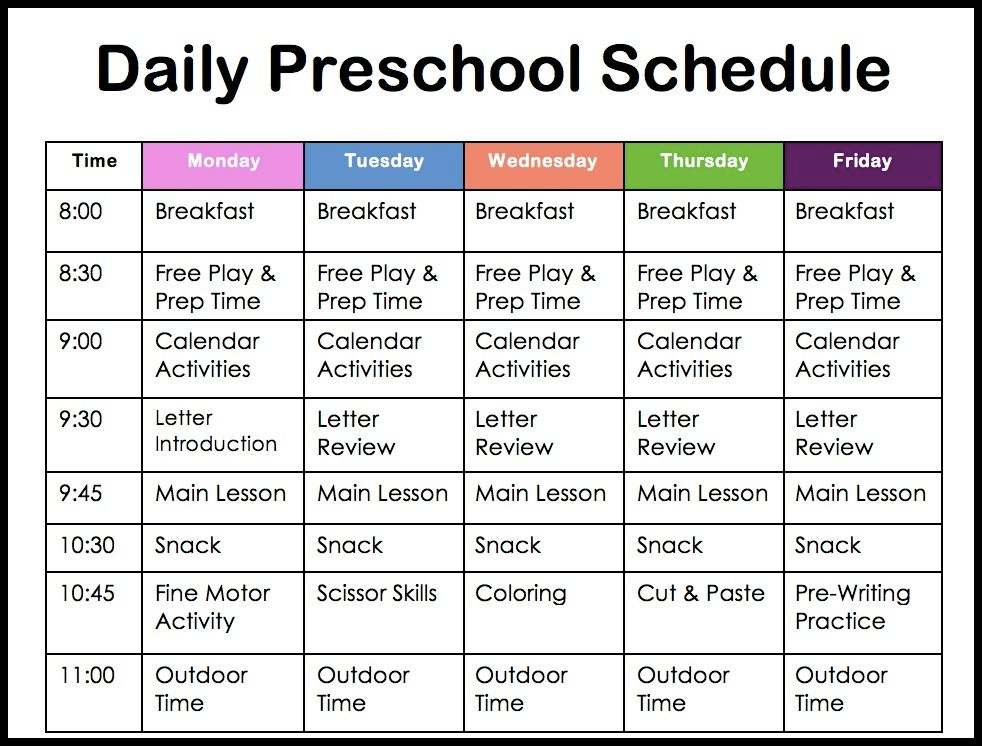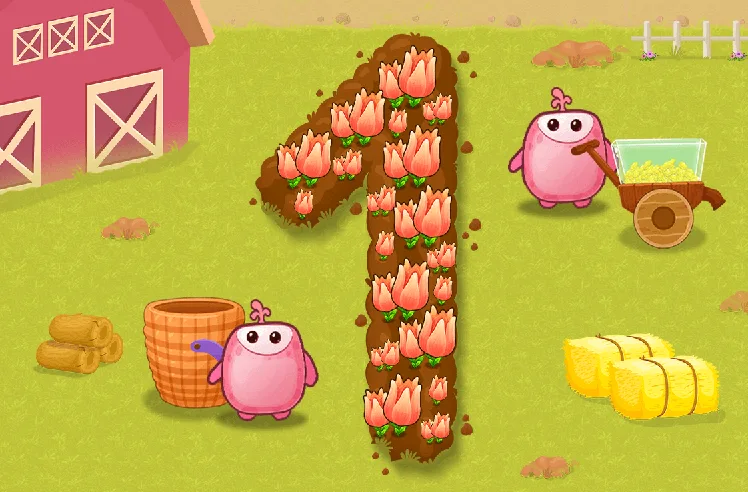Do you often wonder how to keep your preschooler’s day organized and stress-free? A well-planned schedule for preschoolers can make a huge difference. In this blog, we’ll explore why a preschool schedule is essential and how to create one that works for your child.
Math & ELA | PreK To Grade 5
Kids see fun.
You see real learning outcomes.
Watch your kids fall in love with math & reading through our scientifically designed curriculum.
Parents, try for free Teachers, use for free
How Can a Schedule Help My Preschooler?
- Creates Stability: A preschooler’s schedule brings a sense of stability and security. When children know what to expect, they feel more confident and secure.
- Promotes Good Habits: Establishing a daily schedule for preschool helps children develop good habits early on. Regular routines for meals, play, and rest set the foundation for a healthy lifestyle.
- Enhances Learning: A structured preschool daily schedule balances learning activities with playtime, ensuring your child gets the most out of their day.
- Reduces Tantrums: When preschoolers know what’s coming next, they are less likely to have tantrums. A predictable routine helps them transition smoothly from one activity to another.
- Supports Independence: Following a preschool daily schedule teaches children to manage their time and tasks independently, building confidence and self-reliance.
How to Create a Structured Preschooler Schedule
A structured schedule can keep your preschooler happy, engaged, and well-adjusted. Here is how you can create one:
- Understand your child’s needs: To create an effective schedule for preschoolers, observe your child’s natural rhythms. Notice when they are most active and when they tend to get tired. This will help you plan activities when they are most likely to be engaged and happy.
- Balance activities: A well-balanced daily schedule template for preschool should include educational activities, playtime, meals, and rest periods. Ensure a good mix of indoor and outdoor play keeps them physically active and mentally stimulated. Balancing these activities will keep your preschooler engaged and content throughout the day.
- Be consistent yet flexible: While consistency is key to a successful pre k schedule, it’s also important to be flexible. Sometimes, things won’t go as planned, and that’s okay. If your child needs a bit more time to finish a puzzle or is particularly interested in a story, allow for some flexibility in the schedule.
- Include visual aids: Visual aids like charts or picture cards can help your child understand and follow their daily routine. This makes the home schedule for preschoolers more engaging and easier to follow. You can create a simple chart with pictures representing different activities and times of the day.
- Involve your child: When you involve your child in creating their schedule, they are more likely to follow it. Ask for their input on what activities they enjoy and when they like to do them. This collaboration makes them feel important and more committed to practicing the routine.
Preschool Schedule Examples

1. Preschool Full-Day Schedule Example
Creating a full-day preschool schedule can help you manage your child’s time effectively. Here’s a detailed example of a preschool activity plan that balances learning, play, and rest.
- 7:00 AM – 8:00 AM: Wake Up and Breakfast
Start the day with a healthy breakfast to fuel your preschooler’s energy.
- 8:00 AM – 8:30 AM: Free Play
Allow some free play time for your child to choose their activities. This can include playing with toys, reading books, or doing puzzles.
- 8:30 AM – 9:00 AM: Circle Time
Engage in circle time activities such as singing songs, reading a story, or discussing the day’s weather and calendar. This helps set the preschool times and routines for the day.
- 9:00 AM – 10:00 AM: Learning Session
Focus on educational activities like alphabet games, counting exercises, and simple science experiments. This is a key part of the preschool activity plan to enhance their learning skills.
If you are looking to make your child’s learning session fun and interactive, explore these games that are equal parts fun and educational:
- 10:00 AM – 10:30 AM: Snack Time
A healthy snack break to keep their energy levels up.
- 10:30 AM – 11:30 AM: Outdoor Play
Spend time outdoors, playing in the yard or visiting a park. Physical activity is crucial for their development.
- 11:30 AM – 12:00 PM: Art and Craft
Engage in creative activities like drawing, painting, or crafting. This nurtures their creativity and fine motor skills.
Here are some fun mess-free art and creativity games for preschoolers that can fit well in their schedule:
- 12:00 PM – 1:00 PM: Lunch
Serve a nutritious lunch and some quiet time to relax and digest.
- 1:00 PM – 2:30 PM: Nap Time
A nap is essential to recharge their energy for the rest of the day.
- 2:30 PM – 3:00 PM: Snack Time
A light snack to wake them up from their nap.
- 3:00 PM – 4:00 PM: Screen Time with Educational Games
Introduce screen time with educational games that are both fun and informative. This can be a great way for them to learn while enjoying downtime.
If you are looking to make your preschooler’s screen time educational and fun, here are some fun games to get started with:
- 4:00 PM – 5:00 PM: Indoor Play
Allow some indoor playtime with toys, building blocks, or board games.
- 5:00 PM – 6:00 PM: Dinner Preparation and Chores
Involve your child in simple chores or let them play independently while you prepare dinner.
- 6:00 PM – 7:00 PM: Family Dinner
Enjoy a family meal together, discussing the day’s activities and experiences.
- 7:00 PM – 7:30 PM: Story Time and Bedtime Routine
Wind down with a bedtime story, brushing your teeth, and getting ready for bed.
- 7:30 PM: Bedtime
End the day with a consistent bedtime to ensure they get enough rest.
This full-day preschool schedule helps maintain a balanced and structured day for your child, ensuring time for learning, play, and rest.
2. Preschool Half-Day Schedule Example
If your child attends preschool for only half a day, you can still fit in essential activities to ensure a balanced and productive routine. Here’s a sample schedule that makes the most of the time available.
- 8:00 AM – 8:30 AM: Arrival and Free Play
Start the day with free play to help your child transition into the school environment comfortably.
- 8:30 AM – 9:00 AM: Circle Time
Engage in circle time activities such as singing songs, discussing the calendar, and reading a short story. This sets the preschool times and helps children settle into the day’s routine.
- 9:00 AM – 9:30 AM: Learning Session
Focus on educational activities like letter recognition, basic math, and simple science concepts. These short, focused sessions are a key part of the preschool activity plan.
- 9:30 AM – 10:00 AM: Snack Time
A quick snack break to recharge and refuel.
- 10:00 AM – 10:30 AM: Outdoor Play
Spend time outside, playing games, or exploring nature. Physical activity is crucial even in a half-day schedule.
- 10:30 AM – 11:00 AM: Art and Craft
Involve your child in creative activities like drawing, painting, or making simple crafts. This nurtures their creativity and fine motor skills.
- 11:00 AM – 11:30 AM: Screen Time with Educational Games
Introduce screen time with educational games that are both fun and informative, making the most of the limited time.
- 11:30 AM – 12:00 PM: Story Time and Departure
Wind down with a story and prepare for departure. This helps children transition smoothly from school to home.
This half-day preschool schedule ensures your child engages in essential learning and play activities, providing a well-rounded experience even within a shorter timeframe.
Related Reading: Best Fine Motor Activities for Preschoolers
6 Tips for Implementing a Preschool Schedule
1. Begin by gradually introducing the schedule. You don’t need to implement everything at once. Start with the most important activities, like meals and nap times, and slowly add other elements. This will help your child adjust without feeling overwhelmed.
2. Consistency is key when establishing a preschool schedule. Try to stick to the routine as closely as possible. This regularity helps your child understand what to expect daily, making them feel more secure and confident.
3. Use positive reinforcement to encourage your child to follow the schedule. Praise them when they stick to the routine or complete an activity on time. You can also use small rewards like stickers or extra playtime to motivate them.
4. While consistency is important, it’s also crucial to be flexible. If something isn’t working, don’t be afraid to make changes. Listen to your child’s feedback and adjust the schedule based on their needs and preferences.
5. Use visual aids like charts or picture cards to help your child understand and remember the schedule. A visual schedule can make it easier for them to follow along and know what’s coming next.
6. Transitions between activities can be challenging. Use techniques like giving advance warnings (e.g., “In five minutes, it will be time to clean up”) or using songs and cues to signal changes. This helps your child prepare for the next activity smoothly.
Related Reading: How to Create After School Schedule for Kids
Conclusion
Creating a consistent schedule for preschoolers can make a big difference in their daily routine. It helps them feel secure, develop good habits, and enjoy balanced learning and play. Start implementing a schedule today to see positive changes in your preschooler’s behavior and development.
Related Reading: Easy Activities for Preschoolers


































